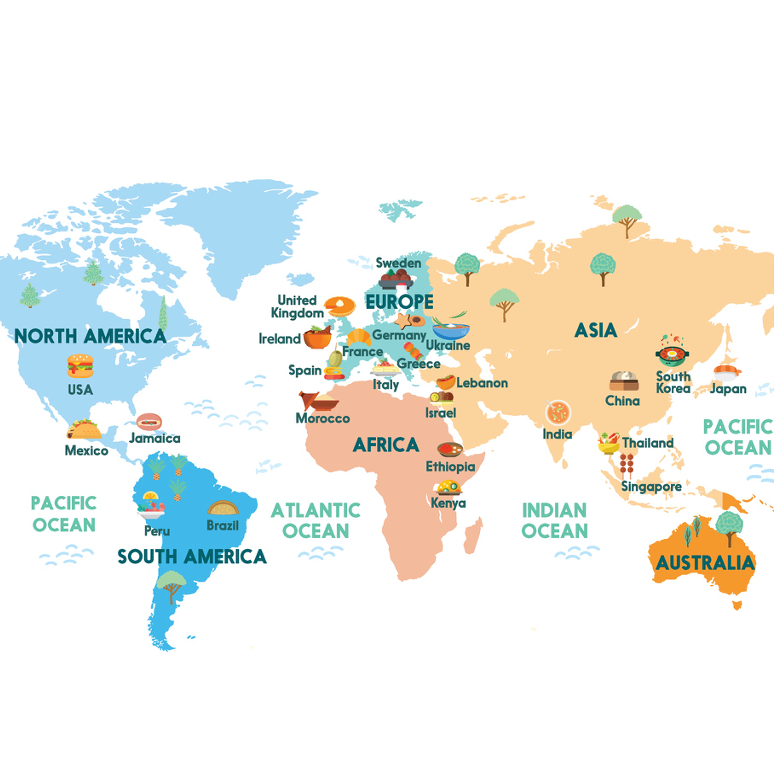Rock art is found in places all over the world.
The awesome thing about rock art is a lot of it pre-dates writing! It’s like a glimpse into prehistoric times!
What Is Rock Art?
Rock art is one of the terms used by archaeologists to describe carvings and paintings on natural surfaces, like on cave walls and rock faces.
They are also called pictographs, cave art, petroglyphs and engravings.
Geoglyphs are pictures carved or painted on the ground like the Nazca Lines found in Peru or the Uffington White Horse found in the UK.
People recorded events and ideas and thoughts by using what was available to them. This was a long time before writing had even been developed.
How Is Rock Art Created?

With petroglyphs, people carved images into the rocks. Sometimes it would just create an indentation in the surface. Sometimes the face of the rock would reveal a lighter or different color underneath the surface.
People used things like other stones, chisels, or metal blades to carve the rock’s surface.
Pictographs are created by “painting” on the rocks. Paint was made from natural ingredients found nearby or received in trade. Some of the most famous cave paintings are found in Lascaux Cave in France.

The ancient artists didn't use a wide variety of colors. Three of the ingredients used were: ochre, charcoal, and diatomaceous earth. Red, yellow, brown, black and white were the most common colors.
Red, yellow, and brown were made from things like ground ochre. Ochre is natural clay which has iron deposits in it. The iron, as it’s exposed to air and moisture, rusts.
That’s what gives it the reddish-brown color. Different amounts of iron in the mixture create the yellows and browns.
Black was made from charcoal from fires, or from minerals like manganese.
White was made from natural chalk, kaolinite clay, or diatomaceous earth. Diatomaceous earth is a soft, sedimentary rock that has a lot of silica in it. When ground it turns into a fine white powder.
The substance was ground up and mixed with something like fat or egg yolks. Then it was painted on the rocks with fingers or charcoal sticks, or whatever was available!
Who Created Rock Art?
These art forms are found all over the globe. The artists were the indigenous tribes, the hunters and gatherers of the region who were the ancestors of the people who live in the areas now.

In Africa, tribes left behind their stories in caves and rock faces which were protected from the elements by overhanging outcroppings of rock.
These prehistoric art forms in Africa began to be documented and catalogued in the early 1900’s. Since then many more sites have been uncovered.
Archaeologists have found rock art in the Saharan Desert. The arid and dry conditions of the desert are just right for preserving these ancient records.
The oldest rock art in Africa, so far, has been scientifically dated to about 28,000 years ago.
There are sites which still hold cultural and religious meaning, and have for hundreds of years. Some of the art work can be difficult to date because of this.
Throughout history, people add bits and pieces to the original drawings or carvings.
Why Is Discovering and Preserving Rock Art Important?

Rock art helps the scientists and archaeologists who study human history understand more about how people evolved and when the evolution began.
These pictures and symbols from thousands of years ago help in showing when “complex thinking” started to show up. First it was with symbols, like the rock art.
Animals were stylized, which means they didn't look like real animals.
The artists drew and carved geometric patterns. They also told stories and legends with simple pictures on the walls of caves.
These humans had something to say! And they left their mark on the world… quite literally.
Eventually, the symbols and figures became much more complex. As human societies developed, the art became a little more “descriptive” and writing was invented.
New rock art sites are being found all the time.
Kakapel and Other Kenyan Rock Art Sites
Kenya’s rock art didn’t come to the attention of people outside of the country until 1946. And research into the various locations finally began to pick up in the 1960’s. So, the discovery of the many Kenyan sites for rock art is relatively new!
The importance of preserving this history became pretty clear to the people who were finding it. It is part of the culture and the heritage of the places where it’s found.
Considering the images are so very old, sometimes they are difficult to spot! Where they are found, the images are preserved and documented.
You can learn more about Kakapel in our Explore Kenya in a Week lesson plan. All our lesson plans are available for free with your subscription to eat2explore!







